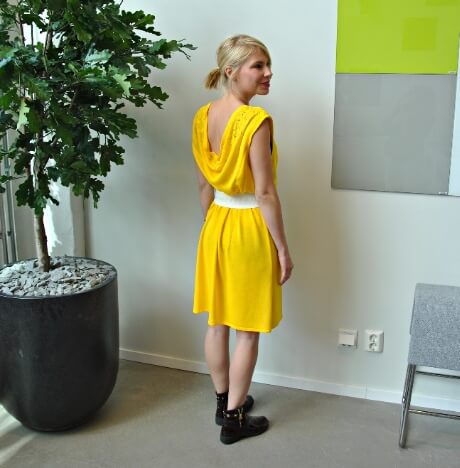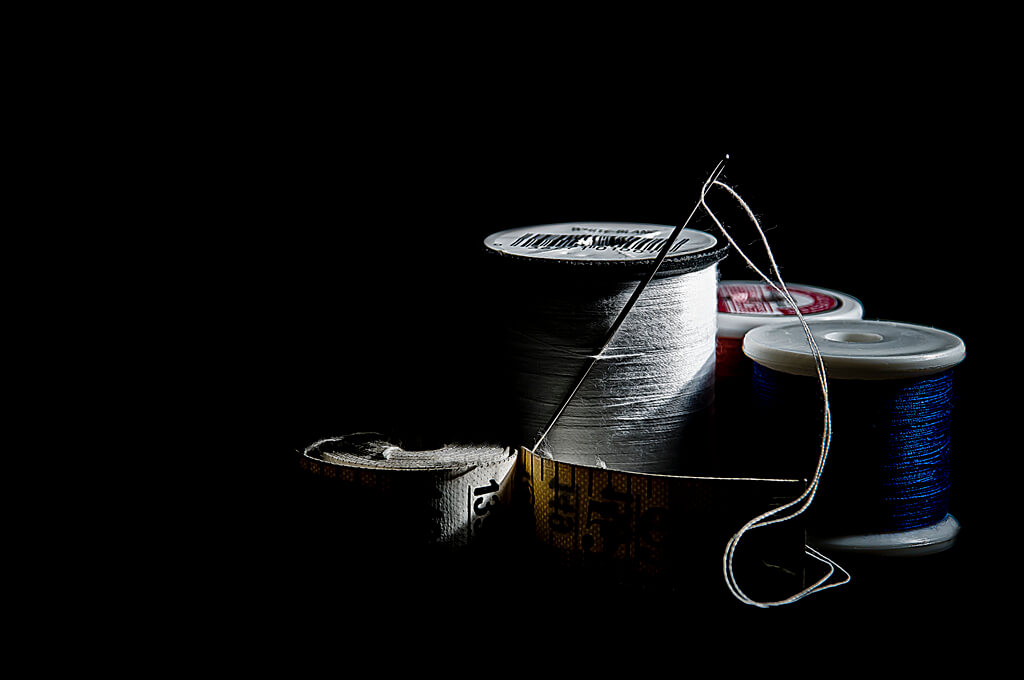If they can do it with paper, we can do it with textile
Sweden successfully completes the first textile recycling program turning old cotton garments into new rayon fabric.
The dress (shown below), lived (hopefully a pleasant life) as a few pairs of blue jeans before being soaked, deconstructed, shredded, soaked again and respun into rayon fabric. Yes, a lot, but the breakthrough technology, Re:newcell, developed at the Royal Institute of Technology in Stockholm, is the first of it’s kind to completely retransform old garments into new fabric.

image: SKS Textiles
The process forms a new rayon textile fibers from used clothes in a few steps. First, old cotton clothing are sorted and ripped into threads. Then, the threads are treated in a chemical step to dissolve into a liquid (exactly like the rayon/viscose process where wood pulp is turned into fiber). In this step anything other than cotton and viscose — buttons, zipper ect. — are extracted. Next, its treated with a second chemical stage and finally spun into a new viscose fibre.
The company sees no shortage of textile waste — with the worldwide annual consumption of fabric reaching approximately 73 million tons — and sees the process as both scaleable and economically viable.
Scalability might not be the issue, but other blocks stand in the way of a streamlined system. Henrik Norlin, Business Development Manager at re:newcell, says the technology can use cotton garments blended with other materials, but there are major quality issues when blended fibers come into play, and the best results are seen when 100% cotton garments are used. Moreover, the wide range of pollutants found in raw materials — specifically, flame retardants and anti-wrinkle properties — pose another hinderance for the process to produce the greatest outcome. And if there is a wide range of dyes in the fabric process, decolorants must be used.
A true innovation within textile recycling, the dress was on display in Visby, Sweden last week. And now with proof of viability, plans to scale big are on the horizon. Re:newcell is planning to set up its first fabric-recycling factory, which will open its doors within the next 18 months. It will be able to process 2,000 tons of fabric per year, said Norlin.
The only major issue with the method is the process is single-sided. The newly produced rayon doesn’t recycle as well, so the process cannot continue after the first recycling.
It’s no doubt the Re:newcell process is a major breakthrough in textile recycling and will pave the way for future innovations. Let’s just ensure to keep an eye out for 100% cotton garments to feed into the new system.
featured image via Lee Morely

